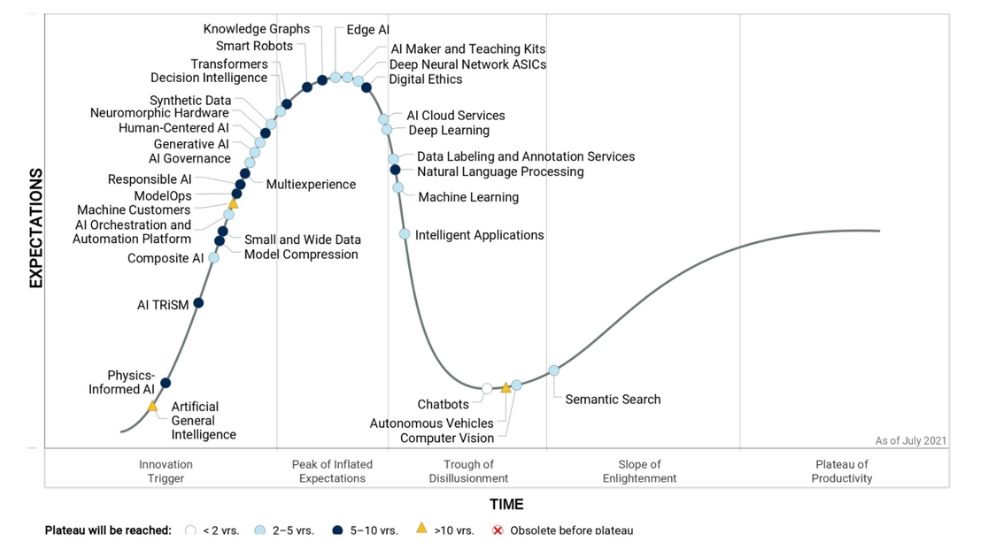Gartner identifies Responsible AI as driving near-term AI hype cycle 2021

Four trends on the Gartner, Hype Cycle for Artificial Intelligence, 2021 are driving near-term artificial intelligence innovation. These trends include responsible artificial intelligence, small and wide data approaches, operationalisation of artificial intelligence platforms; and efficient use of data, model and compute resources.
“Artificial intelligence innovation is happening at a rapid pace, with an above-average number of technologies on the Hype Cycle reaching mainstream adoption within two to five years,” said Shubhangi Vashisth, senior principal research analyst at Gartner. “Innovations including edge artificial intelligence, computer vision, decision intelligence and machine learning are all poised to have a transformational impact on the market in coming years.”
The artificial intelligence market remains in an evolutionary state, with a high percentage of artificial intelligence innovations appearing on the upward-sloping Innovation Trigger. This indicates a market trend of end-users seeking specific technology capabilities that are often beyond the capabilities of current artificial intelligence tools.
Hype Cycle for Artificial Intelligence, 2021

Here are the four trends that are driving artificial intelligence innovation, according to Gartner:
Responsible Artificial Intelligence
“Increased trust, transparency, fairness and auditability of artificial intelligence technologies continues to be of growing importance to a wide range of stakeholders,” said Svetlana Sicular, research vice president at Gartner. “Responsible artificial intelligence helps achieve fairness, even though biases are baked into the data, gain trust, although transparency and explainability methods are evolving; and ensure regulatory compliance, while grappling with artificial intelligence’s probabilistic nature.”
In fact, Gartner expects that by 2023, all personnel hired for artificial intelligence development and training work will have to demonstrate expertise in responsible artificial intelligence.
Small and Wide Data
Data forms the foundation of successful artificial intelligence initiatives. Small and wide data approaches enable more robust analytics and artificial intelligence, reduce organisations’ dependency on big data, and deliver richer, more complete situational awareness.
According to Gartner, by 2025, 70% of organisations will be compelled to shift their focus from big to small and wide data, providing more context for analytics and making artificial intelligence less data-hungry.
“Small data is about the application of analytical techniques that require less data but still offer useful insights, while wide data enables the analysis and synergy of a variety of data sources,” said Sicular. “Together, these approaches enable more robust analytics and help attain a more 360-degree view of business problems.”
Operationalisation of Artificial Intelligence Platforms
The urgency and criticality of leveraging analytical techniques for business transformation are driving the need for the operationalisation of artificial intelligence platforms. This means moving artificial intelligence projects from concept to production so that artificial intelligence solutions can be relied upon to solve enterprise-wide problems.
“Gartner research has found that only half of artificial intelligence projects make it from pilot into production, and those that do take an average of nine months to do so,” said Sicular. “Innovations such as artificial intelligence orchestration and automation platforms and model operationalisation, ModelOps, are enabling reusability, scalability and governance, accelerating artificial intelligence adoption and growth.”
Efficient Use of Resources
Given the complexity and scale of the data, models and computing resources involved in artificial intelligence deployments, artificial intelligence innovation requires such resources to be used at maximum efficiency. Multi experience, composite artificial intelligence, generative artificial intelligence and transformers are gaining visibility in the artificial intelligence market for their ability to solve a wide range of business problems in a more efficient manner.





